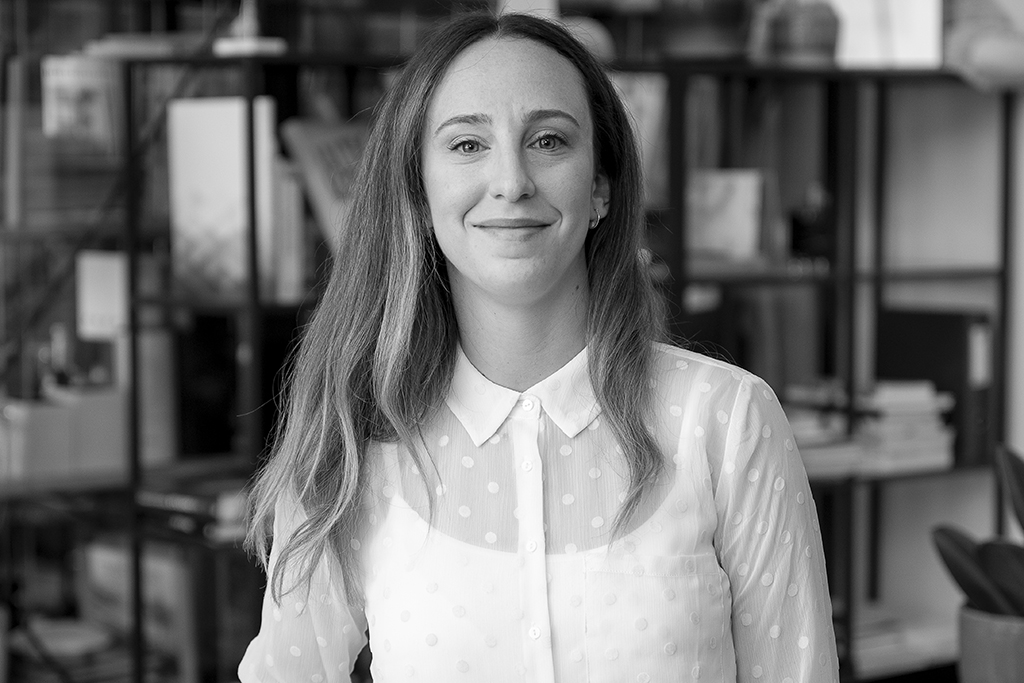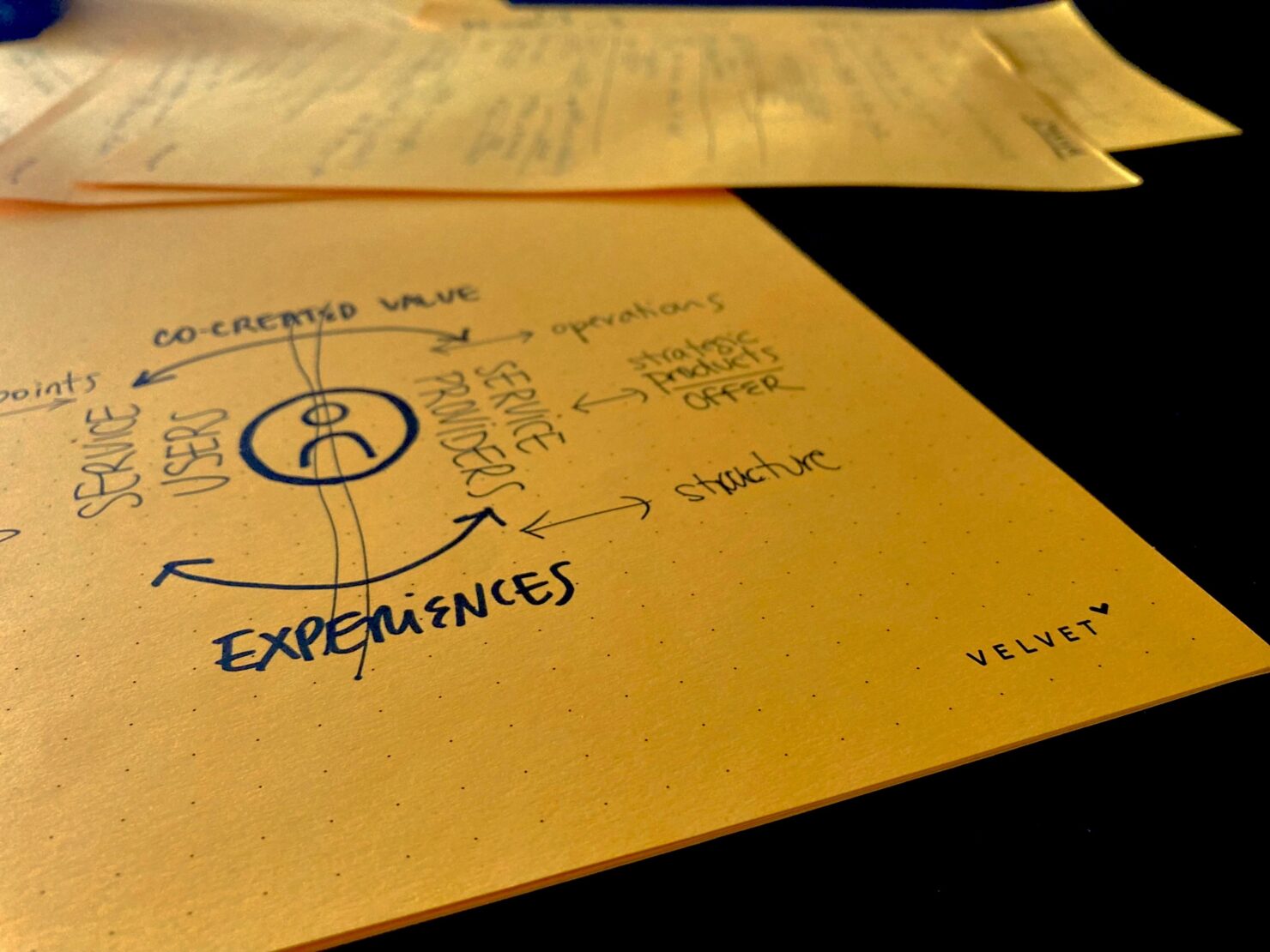February 24th, 2022 | Blog
Making Business Sense – How service design creates value by orchestrating experiences
We experience services all the time. Maybe without even realising it – think of sending packages, booking a trip experience, ordering groceries, or securing your house. These services need to be compellingly designed, just as products are. For that, service design becomes the new competitive asset.
Velvet’s service designer Carolina Maia Groisman will tell you why. Read on!

Service design helps organisations improve the way value is offered and shape better brand experiences and interactions, by building empathy and understanding people. Keep in mind that it is not about what you promise your customers, it’s about how well you deliver on that promise. Luckily, it’s not magic. You can actually design the process.
But first, service design is… what?
There are multiple definitions for this rather young and developing discipline. In the most simple of its forms: service design is the design of services. A service is the delivery of intangible value commonly from an organisation to a person(B2C) (definition #1 of thousands), but of course, it can also be from an organisation to an organisation (B2B).
The design of the intangible value offered is one of the main challenges and key elements of any service-oriented organisation. Service design focuses on the how that value is delivered through user and customer experiences, based on their needs and desires but also on the context.
What makes service design unique as a discipline is the combination of an eagle-eye perspective – as it evaluates and designs holistic experiences, often dealing with complex, systemic issues – with a focus on both the front and back-end of services (analysing and designing what the users see and what they don’t). It looks at the users’ experience of a service as well as the organisation’s operations and goals to create better delivery of value. With that, it has the potential to drive change and innovation, either when designing new services or improving existing ones.
We look at the users’ experience of a service as well as the organisation’s operations and goals to create better delivery of value.
Service design: the Velvet way
In Velvet, we take a holistic, human-centred and participatory approach to service design aiming to generate value for the service users and service providers by creating better processes and interactions.
- Our human-centred approach comes from considering users’ experiences, needs, wants and aspirations, as well as the employee’s needs and experiences.
- A holistic approach means we don’t focus only on one aspect or medium of the service, but rather look at the organisation and service as a whole that needs to be designed to deliver best value.
- Lastly, our participatory approach means we create and work with clients and users, involving the key stakeholders in design activities.
Driving intangible value for business
Even though services have been around for a long time, carefully crafted and consciously designed service experiences are a rather new (and still rare) thing. Organisations from different industries acknowledge the importance of service design, but we see that for some, it’s still confusing to understand the value that it can provide for their business.
Several studies conducted by consultancy organisations (like the Design Index by UK’s Design Council or ‘The business value of design’ report by McKinsey) have demonstrated the value of design and research-driven practices. Companies highlighted by their approach to design focus on the delivery of holistic, integrated, user-centred experiences, that break barriers between physical and digital worlds. According to these studies, design-led organisations across different industries perform better and outperform the market, having higher revenues, annual growth rates and total returns to shareholders. We can say it is because they make more sense.
Service design is not about what you promise your customers, it’s about how well you deliver on that promise.
The service value offer is the way how services offer value
Nowadays, great customer service is expected and almost given for granted. If an experience is nicely orchestrated, the service itself is not what we remember afterwards, but the way it made us feel. Users experience services holistically, as a sequence of interactions with touchpoints that happen across different channels over time. How companies deliver these experiences is becoming just as important (if not more) than the value they offer. Those cohesive, supported, seamless, empowering and/or inspiring customer experiences (depending on the case) are the core of the intangible value of services.
The collection of services that a business or an organisation offers to meet the needs of their customers, users, employees & partners is what we call a service value offer or service offer. The most straightforward definition of service offer that I’ve read was written by Lara Penin in her book “An Introduction to Service Design. Designing the Invisible”(Bloomsbury, 2018):
“The most strategic ‘product’ of service design. It is ultimately what the service is all about, the delivered result, the value that is co-created between the service provider and the service user”.

We thrive to deliver value
Our work is all about discovering challenges in larger contexts and organisational ecosystems, while looking also in detail from different points of view. We create relevant and impactful experiences in collaboration with the people involved and coming up with a way to make sense of things. The results of our design work generate value by impacting people’s lives and how they experience, participate or deliver a diverse range of services, both in private and public sector. Our latest and current projects include:
- to design for a more accurate engagement of residents in public services,
- to improve the organisational model of a support system for families,
- to create a digital platform for the collaboration between different public stakeholders,
- and to improve the user experience of a medical laboratory, among others.
And as the service landscape becomes more complex, our Strategic Service Design team has what it takes to know what service users and providers need and value. As we describe in the principles that guide us here in Velvet:
“It’s not about mapping out user needs or pains, it’s about understanding what kind of future people want from themselves and how we can help create it”.
That’s all for today. If you made it this far, I hope you got inspiration on how we can work together. Get in touch if you have any questions or comments! You know where to find us.
References
- Design Management Institute. The Value of Design
- Live|Work. The business effect of service design
- Humanized Design | Medium. Explaining the value of service design.
- Harvard Business Review. The Four Things a Service Business Must Get Right
- Design Management Review. Bottom-line Experiences: Measuring the Value of Design in Service
- McKinsey. The business value of design.
- British Design Council. A brief history of the measurement of design